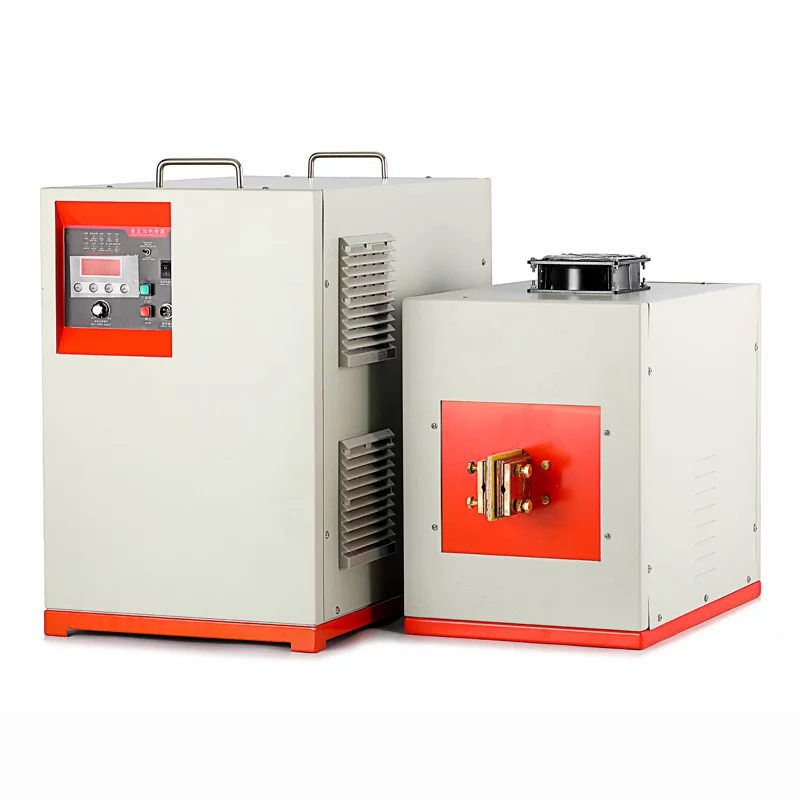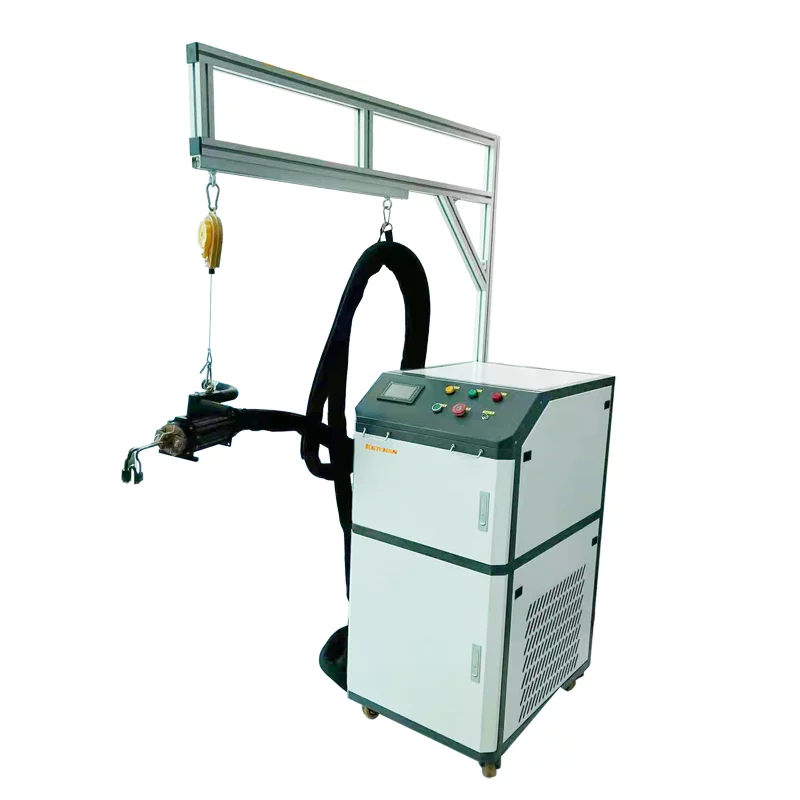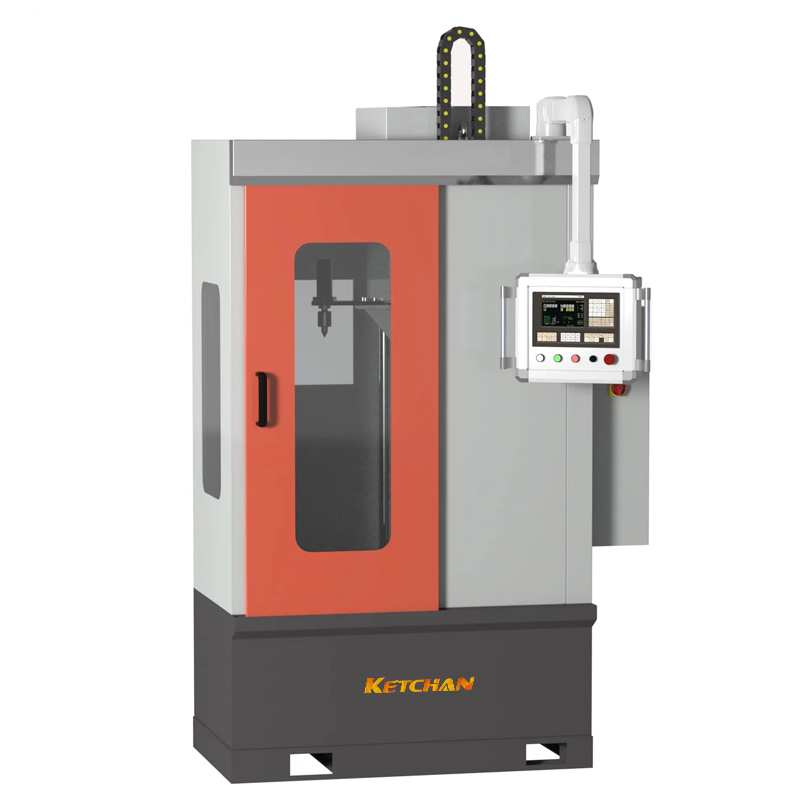Since the 1960s, there has been an important change in the smelting process of the cast iron industry all over the world, and more and more enterprises use induction furnace as smelting equipment. Especially after the 1970s, the power supply of intermediate frequency centerless induction furnace has been greatly improved, the thermal efficiency of molten iron can reach 70%, the furnace equipment and the refractory materials used are also in constant development, so its application is increasingly extensive.
When cast iron is smelted by induction furnace, the amount of cast pig iron ingot in charge is gradually reduced, and the proportion of scrap steel is correspondingly increased, while the alloying elements in steel have a negative effect on the performance of cast iron (especially ductile iron), and even become pollution elements.
In the past 20 years, all kinds of steel are developing towards thin-walled, lightweight, and toughened, and the application range of high-strength and low-alloy steel is expanding day by day. Around 1980, the common steel is mainly carbon steel, and the proportion of low-alloy steel is less than 20%. In 2005, the proportion of low-alloy steel in common steel has reached about 50%, or even higher. From the perspective of the full utilization of resources, the lightweight of all kinds of equipment, and the progress of technology, it is certainly a good thing, and this trend will continue in the future, but the increase of such alloy elements in scrap steel has brought a lot of difficult problems to the cast iron industry, it is necessary to take the necessary measures.
In addition, due to the increased demand for scrap steel, its sources involved in all walks of life, mixed with some polluting elements, such as lead, aluminum, zinc, etc., is also inevitable.
At the same time, with the development of industry and technological progress, the quality requirements for all kinds of castings are increasing day by day. At present, people pay more attention to the demand for high-performance ductile iron, thick cross-section, ferrite ductile iron is increasing, and isothermal quenching ductile iron and vermicular iron are gradually popularized and applied. All of these, are required to improve the purity of cast iron material, burden brought by the impact of interfering elements has become a problem we have to face, the production and application of high purity pig iron, also became the focus of the casting industry.
It should also be noted that, up to now, the consumption of various gray cast iron parts in various countries in the world is still far greater than that of ductile cast iron and vermicular cast iron combined. Moreover, the internal quality of grey cast iron, the thin-walled casting, and the consistency of product quality are increasingly required. Therefore, for the melting of gray cast iron, the consideration of using high-purity pig iron as the metal charge is paid more and more attention.
In addition to traditional charcoal pig iron made in Sweden, the first producer of high purity pig iron is A Canadian company, Qit-Fer et Titane, located in Sorel, Quebec, which produces titania-rich iron ore about 1000 km to the northeast. The company makes high purity pig iron and titania-containing iron alloys.QIT means, in fact, Quebec iron, titanium company.
The commodity name of the high purity pig iron produced by the company is called “Sorelmetal”, that is, high purity pig iron for QIT casting. The production of Sorelmetal has a history of more than 50 years. At first, it was widely used in the automobile industry of the United States and Canada. Later, it was sold to other countries around the world. Later, QIT established an RMB company in South Africa and also produced Sorelmetal.
Sorelmetal isn’t smelted in a blast furnace, it’s made by mixing Iron ore and anthracite in an electric arc furnace, which is heated and then gradually reduced and melted using the varying stability of various metal oxides, according to QIT’s book Suggestions for Ductile Iron Production. (As for the manufacturing method of Sorelmetal, the author and Comrade Qian Li had a brief discussion, and we believe that the above statement of QIT company is problematic, or at least inaccurate. From the point of view of the chemical composition of Sorelmetal, it should have been oxidized.)
High purity pig iron can be made by oxidizing molten iron in a blast furnace. The key points of producing high purity pig iron in this way are: the molten iron from blast furnace smelting is blown with oxygen or air and treated with oxidation. Through the oxidation treatment, the phosphorus in the iron solution can be greatly removed, part of desulfurization, at the same time, silicon, manganese, titanium, vanadium, chromium, and other easily oxidized elements are also removed, so that the content of various impurities are very low. The equipment used for purification treatment may be a converter, or it may be blown in a reverberatory furnace or in a large cask.
Since the late 1970s, Both Nippon Steel and Kobe Steel in Japan have been producing high-purity pig iron by oxidation. Russia and Brazil are also reported to have started using the process to produce high purity pig iron.
At present, China also has three domestic blast furnace smelting pig iron manufacturers produce high purity pig iron: located in Chengde City, Hebei Province baotong Company, using oxidation purification treatment; There are also manufacturers, by strict control of raw iron ore composition production of high purity pig iron.
In order to meet the needs of the development of China’s foundry industry, China Foundry Association has formulated the industry standard of “high purity cast iron for foundry use”.
It should be particularly mentioned that the slag produced during the smelting of high purity pig iron is a renewable resource, which contains a variety of metal oxides. Depending on the composition of iron ore, thin and expensive metals can be extracted from it. For example, the iron ore qIT-fer et Titane USES to make iron contains a significant amount of titanium, and makes the most of it. If the iron ore used contains more vanadium and titanium, the slag generated during the smelting of high purity pig iron is the raw material for the extraction of vanadium and titanium, and the income from the reuse of slag is actually not lower than the value of pig iron. Therefore, the high-purity pig iron produced by ironworks, if the full use of resources is realized, its price can not be very high, in this respect will also have an advantage.
It should be noted in particular that in order to meet the needs of different customers, the variety and quality of high purity cast iron are also constantly developing. Here, according to the recent research work of Kobe Steel, a brief introduction is given as follows.
The high purity cast iron produced by simple oxidation method needs to be improved
Cast iron adopting legal system of high purity iron oxide in the industry, has more than 50 years of application history, due to the phosphorus, sulfur, easy oxidation of titanium, vanadium, and various elements of the content is very low, can significantly reduce all kinds of alloy element in steel scrap and the negative effect on the quality of cast iron parts interference elements, played an important role for improving the quality of the casting.However, in the practical application process, we have gradually experienced that it still has some unsatisfactory aspects, which need continuous improvement and improvement.
(1) Due to the effect of strong oxidation, the silicon content is very low, pig iron ingots are all white tissue, in molten iron, the carbon core is too small, the degree of supercooling is large, the effect of inbreeding treatment is not good, casting is easy to produce supercooling structure and shrinkage defects, especially not conducive to the production of high quality thin-walled gray cast iron.
(2) Although the content of various interfering elements in this kind of high pure pig iron is very low, its carbon equivalent deviation from the eutectic point is too much, the melting point is high, and the energy consumption is high when melting in an induction furnace.
(3) The content of oxygen and nitrogen in this high purity pig iron is high, and after oxidation treatment, pig iron contains more non-metallic inclusions. Castings made as basic raw materials are sensitive to blowhole defects. If there are other factors involved in the production process, they are prone to produce blowhole.
(4) Low sulfur content, as a raw material in the production of gray cast iron induction furnace, the difficulty of inoculation and treatment.
The work already is done in improving high purity pig iron
In order to make the users of high purity pig iron achieve greater benefits in improving product quality, reducing production cost, saving energy, and reducing emissions, Kobe Steel has done a lot of research on the improvement of high purity cast iron in recent years and has achieved good results in the following aspects.
1. Improve the silicon content of high purity pig iron
After oxidizing, the content of silicon and deoxidization of molten iron in the blast furnace is increased, so that its carbon equivalent is close to eutectic composition, and nitrogen removal measures are taken. This improvement has the following effects:
1) The melting point of pig iron ingot is reduced, and it can be used as the charge of induction furnace, which can reduce the energy consumption in the melting process;
2) The supercooling degree of cast iron is reduced. When producing gray cast iron, the inoculation treatment effect is good, which is conducive to the production of thin-walled parts;
3) Ductile iron used for making can improve the elongation and toughness;
4) The chance of casting porosity is reduced.
2. Provide high purity pig iron with certain sulfur content for the production of gray cast iron
The sulfur content of molten iron must be 0.06 ~ 0.08% in order to ensure the good effect of inoculation. The usual measure is to add FeS into the furnace. However, in the process of smelting in the electric furnace, sulfur is increased by this process, and the sulfur yield is unstable.
In order to stabilize the effect of inoculation treatment and ensure the consistency of casting quality, it is necessary to have a certain sulfur content in high purity pig iron. The specific content can be agreed upon according to the customer’s requirements.
3. Anti-rust treatment of pig iron ingot provided
It is necessary to control the moisture in the charge strictly when the furnace is used in a foundry. The quality of casting products may be affected if the pig iron ingot supplied by ironworks produces red rust on the surface due to moisture during storage and transportation and contains crystallized water. The suppression of red rust is also a problem worth noting.
In the production process of pig iron ingot in Kobe Steel, the pig iron ingot which has been formed is taken out from the mold at high temperature and placed in special equipment to make the surface produce black rust without crystal water, so as to prevent it from producing red rust in the storage and transportation process later.
The prospect of application of high purity pig iron
In recent years, the application of high purity pig iron in the foundry industry in some industrial countries has shown good momentum. According to Japan’s published, incomplete statistics: in 1997, the national consumption of cast pig iron, high purity pig iron accounted for less than 20%; In 2002, it increased to 31%.In addition, Kobe steel recently sold about 60 percent of its cast pig iron, according to the company.
With the continuous improvement of high purity pig iron quality, varieties gradually increase, the price will not be very high and can adapt to the requirements of different customers, its application prospect is very optimistic.
Some people in Japan believe that the use of induction furnace smelting of cast iron enterprises, high purity pig iron in the proportion of the burden will continue to increase, in the future, it is possible to only a very small amount of high-quality scrap steel to adjust the carbon content and the return charge and high purity pig iron as the main burden. In this way, it will be of great benefit to the foundry enterprises to improve product quality and reduce production costs.





